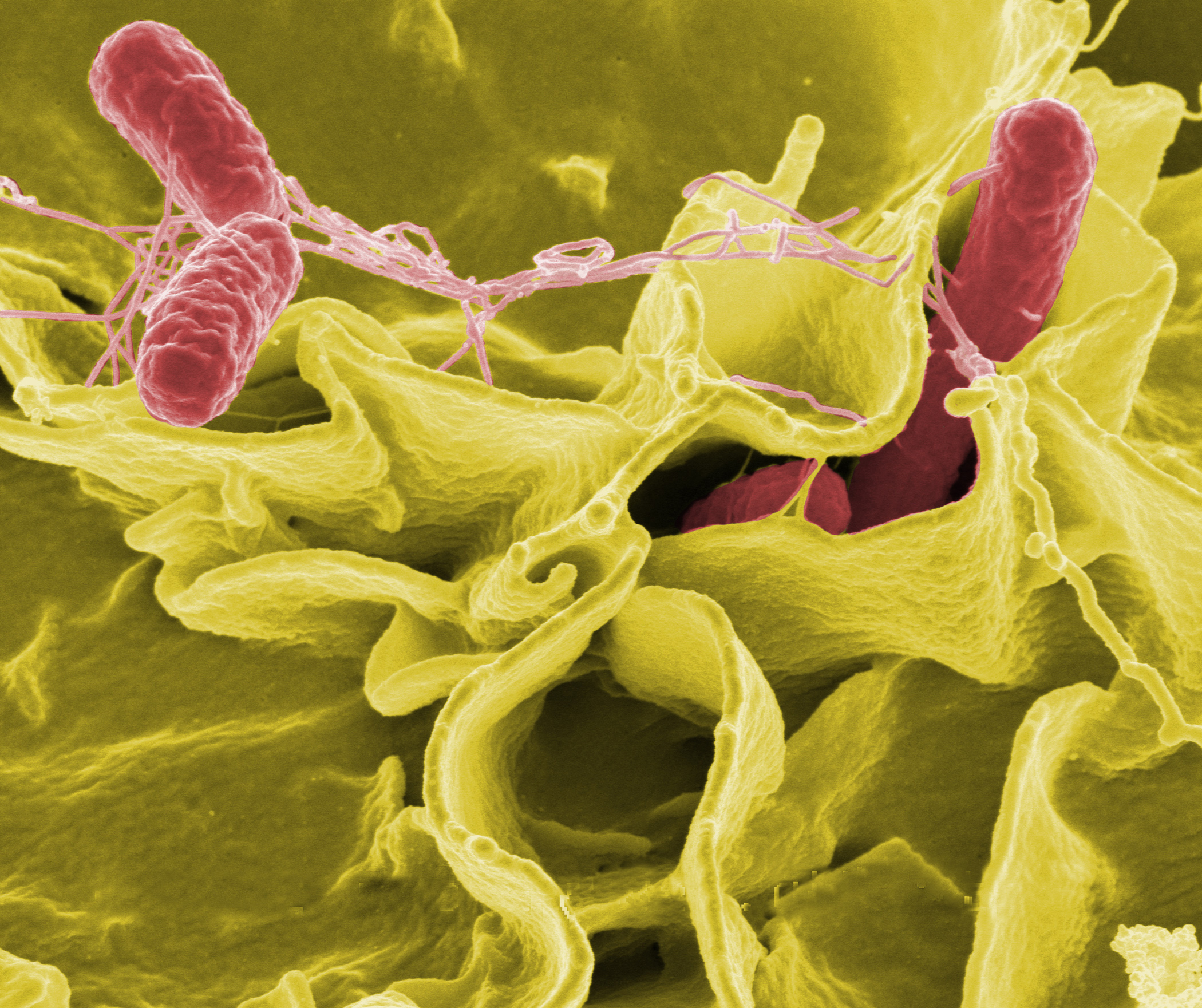Salmonella: Symptoms, Causes, Treatment
What are the symptoms of salmonella?
Salmonella infection, also known as salmonellosis, can cause a variety of symptoms that typically develop within 6 to 72 hours after exposure to the bacteria. The symptoms can vary in severity and may include:
- Diarrhea: The most common symptom of salmonella infection is diarrhea, which may be watery or bloody.
- Abdominal cramps: Cramping and abdominal pain are common symptoms of salmonella infection.
- Fever: Many people with salmonella infection develop a fever, which may be mild to severe.
- Nausea and vomiting: Some people with salmonella infection may experience nausea and vomiting.
- Headache: Headaches are a common symptom of salmonella infection.
- Muscle pains: Some people with salmonella infection may experience muscle pains or body aches.
- Loss of appetite: Loss of appetite is common with salmonella infection.
- Dehydration: Severe diarrhea and vomiting can lead to dehydration, which can be serious, especially in young children, older adults, and people with weakened immune systems.
Symptoms of salmonella infection usually last 4 to 7 days and most people recover without treatment. However, in some cases, the infection can be severe and may require medical attention. If you experience severe or persistent symptoms, or if you have a weakened immune system, it’s important to seek medical care.
What are the causes of salmonella?
Salmonella infection is caused by the Salmonella bacteria, which are found in the intestines of humans and animals. The bacteria are typically transmitted to humans through the consumption of contaminated food or water, or through contact with infected animals or their environments. Common sources of Salmonella infection include:
- Contaminated food: Raw or undercooked eggs, poultry, meat, and seafood are common sources of Salmonella infection. Fruits and vegetables can also become contaminated if they come into contact with infected animal feces or contaminated water.
- Contaminated water: Water that has been contaminated with Salmonella bacteria can cause infection if consumed.
- Cross-contamination: Salmonella bacteria can spread from contaminated food to other foods if proper food handling practices are not followed. For example, using the same cutting board or utensils for raw meat and vegetables without washing them thoroughly can lead to cross-contamination.
- Contact with infected animals: Handling or coming into contact with infected animals, especially reptiles such as turtles, snakes, and lizards, can lead to Salmonella infection. Petting zoos and farms are common sources of infection in children.
- Person-to-person transmission: Salmonella bacteria can be spread from person to person through fecal-oral transmission. This can occur if an infected person does not wash their hands properly after using the bathroom and then touches food or objects that are consumed by others.
- Contaminated environments: Salmonella bacteria can survive in the environment for extended periods, especially in moist environments. Contaminated surfaces, such as countertops, cutting boards, and utensils, can spread the bacteria if not properly cleaned and sanitized.
It’s important to practice good hygiene and food safety practices to reduce the risk of Salmonella infection. This includes washing hands thoroughly with soap and water before handling food, cooking food to the appropriate temperature, and avoiding cross-contamination between raw and cooked foods.
What is the treatment for salmonella?
The treatment for salmonella infection, also known as salmonellosis, depends on the severity of the symptoms and the overall health of the individual. In many cases, salmonella infection resolves on its own without specific treatment. However, in some cases, especially in young children, older adults, and people with weakened immune systems, salmonella infection can be severe and may require medical attention.
Treatment for salmonella infection may include:
- Fluid replacement: If you are experiencing dehydration due to diarrhea and vomiting, your healthcare provider may recommend drinking plenty of fluids or receiving intravenous (IV) fluids to prevent dehydration.
- Antibiotics: In severe cases of salmonella infection or in individuals at high risk of complications, such as those with weakened immune systems, antibiotics may be prescribed to help shorten the duration of the illness and reduce the risk of complications. However, antibiotics are not typically recommended for otherwise healthy individuals with mild cases of salmonella infection, as they may prolong the shedding of the bacteria and increase the risk of antibiotic resistance.
- Symptom management: Over-the-counter medications may be used to help relieve symptoms such as fever, pain, and diarrhea. However, it’s important to consult with a healthcare provider before taking any medications, especially in children.
- Rest and recovery: Getting plenty of rest and allowing your body to recover is important in helping your immune system fight off the infection.
It’s important to follow your healthcare provider’s recommendations for treatment and to contact them if your symptoms worsen or if you have any concerns. Preventing salmonella infection involves practicing good hygiene and food safety practices, such as washing hands thoroughly, cooking food to the appropriate temperature, and avoiding cross-contamination between raw and cooked foods.




